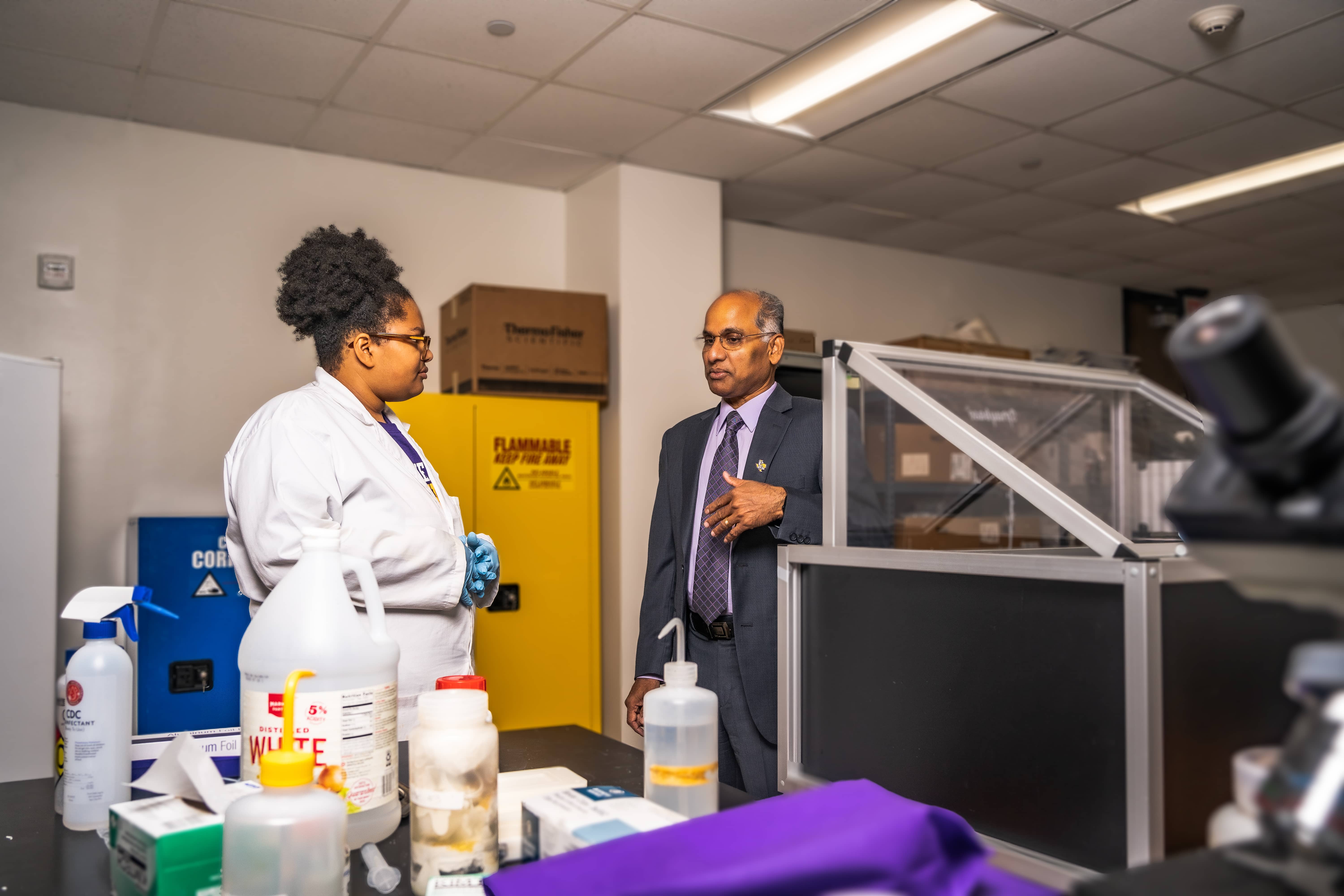The rains decided the fates of farmers in the small rural village in India where Prairie View A&M University’s Honeywell Endowed Professor Raghava Kommalapati, Ph.D., PE, BCEE, F. ASCE, grew up.
As a young boy in the southern state of Andhra Pradesh in India, where farming was the main livelihood, Dr. Kommalapati saw firsthand how dependent farmers are on monsoon rains.
That is why climate change is the driving force behind his research today.
“Energy and environmental sustainability are one of the most critical issues we face as a society,” Kommalapati said. He knows the priceless value of clean drinking water because, growing up, he and his family didn’t have any – just groundwater with high fluoride levels. “We need to address this in the next decade for our civilization to continue to thrive or face an existential crisis.”
After coming to the U.S. to pursue higher education, Kommalapati’s concerns about the environment remained at the forefront of his motivation. As principal investigator and co-PI, Kommalapati has received $19.73 million in research grants, including 51 research grants during his 25-year tenure at PVAMU. He has authored “Atmospheric Aerosols: Characterization, Chemistry, Modeling, and Climate” and dozens of peer-reviewed publications.
Kommalapati’s upbringing gave him a unique advantage: He was studying environmentally friendly methods before sustainable products were popular. When all the other doctoral students were researching commercial surfactants, he focused on a natural plant-based soap (called soap nut) that he used to wash his hair as a kid in India, eventually publishing six papers on the plant-based soap used for centuries in Asia.
“Energy and environmental sustainability are one of the most critical issues we face as a society.”

“Energy and environmental sustainability are one of the most critical issues we face as a society.”
Between his doctoral and post-doc studies and throughout his career, his research has covered soil remediation, air quality modeling, and air-fog interactions in the atmosphere. His primary interest, however, is in energy and environmental sustainability.
Currently, his research focuses on applying membrane processes to treat different types of wastewater, including municipal wastewater, slaughterhouse wastewater and produced water from fracking operations. “The changing climate and the concern for humanity and the planet are the main reasons for pursuing this research,” Kommalapati said.
Appointed to the endowed professorship in 2021, Kommalapati is the director of the Center for Energy & Environmental Sustainability and a professor in PVAMU’s Department of Civil and Environmental Engineering. He holds an M.S. and Ph.D. in environmental engineering from Louisiana State University.
He joined the PVAMU faculty in 1998 after Milton Bryant, the Dean of Engineering at the time, asked him if he wanted to be a big fish in a small pond or one of many in a big pond. Now, nearly three decades later, Kommalapati is making big ripples at PVAMU.
“In our center, we are working on generating sustainable energy solutions and making our current fossil fuel energy more sustainable,” he said. “Finding ways to reuse water from fracking operations, slaughterhouse wastewater, and utilize animal and agricultural waste to generate bioenergy and carbon capture and sequestration are some of the ways we are contributing.”
Kommalapati also enjoys teaching his students, though he is aware of his reputation as a “tough professor.”
“Each of us, as global citizens, has a role to play in reducing our carbon footprint. However, as a current generation engineer, specifically civil and environmental engineers, my students could improve lives by adopting sustainable materials and technologies for infrastructure and basic needs like water,” Kommalapati said. “The future generation of engineers I have the privilege to train looks brighter as we keep exploring ways to lower our carbon footprint while mitigating the impacts of climate change that we increasingly face every year.”

